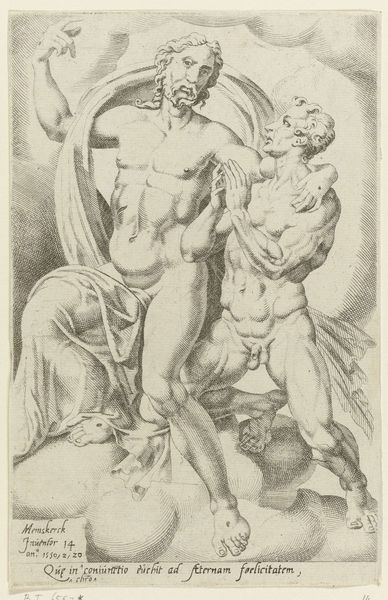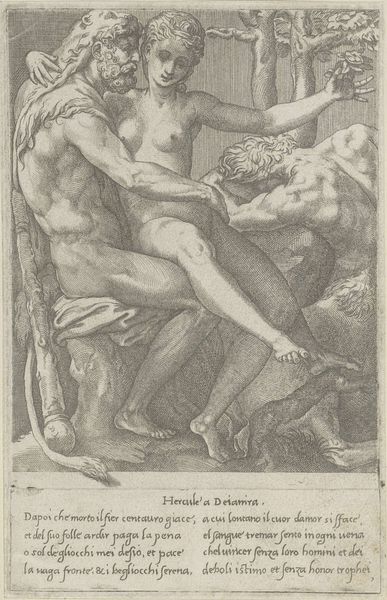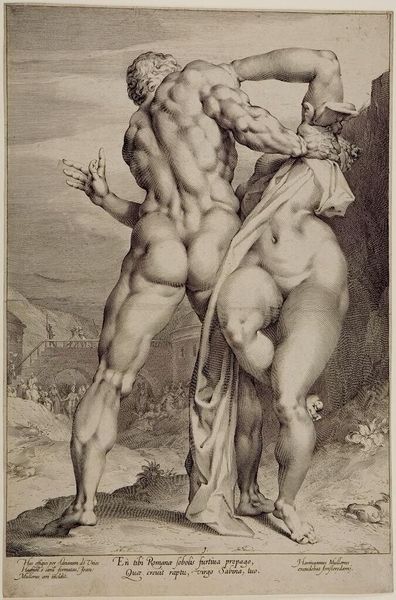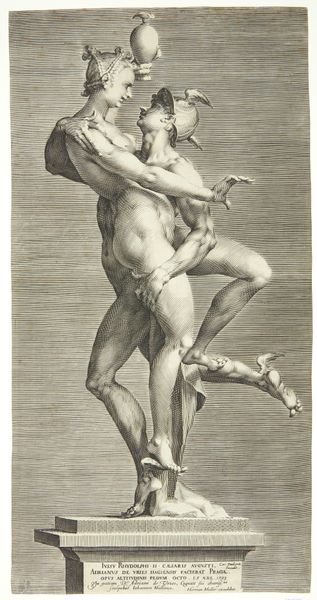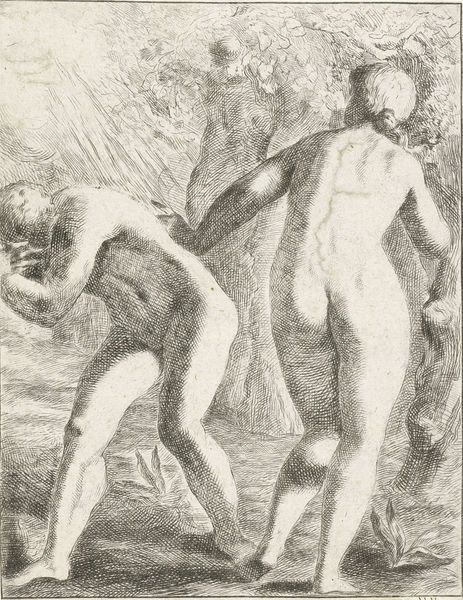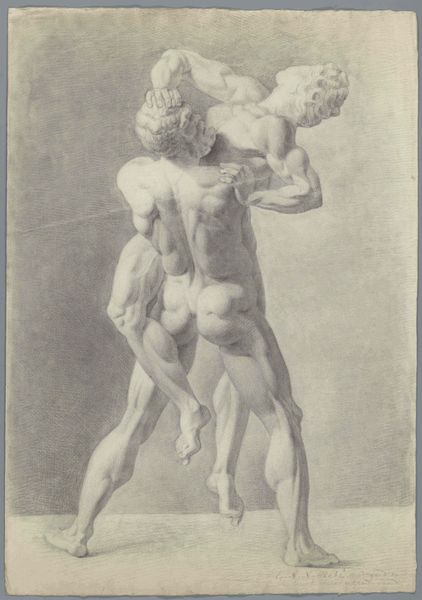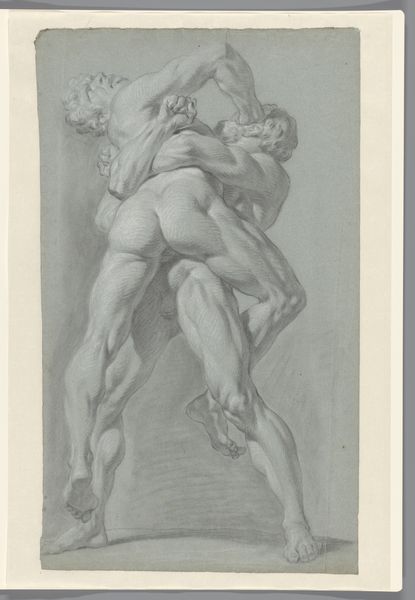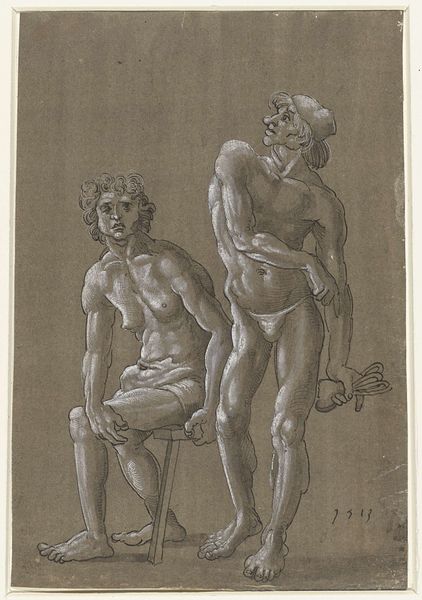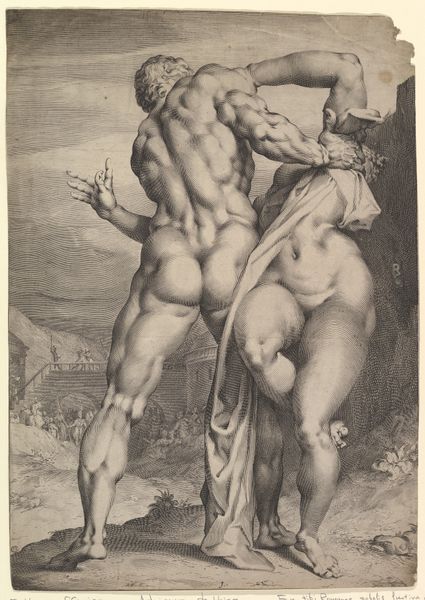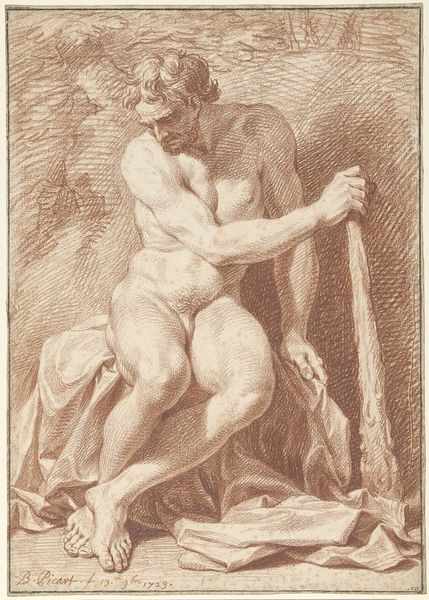
drawing, pencil, charcoal
#
portrait
#
drawing
#
classical-realism
#
charcoal drawing
#
figuration
#
pencil drawing
#
pencil
#
portrait drawing
#
charcoal
#
history-painting
#
academic-art
#
nude
Dimensions: height 565 mm, width 370 mm
Copyright: Rijks Museum: Open Domain
Cornelis Joseph d' Heur created this plaster study of Atalanta and Hippomenes in the 18th century. During this era, there was a significant interest in classical antiquity and mythological narratives. Here, d’Heur depicts a pivotal scene from the Greek myth. Atalanta, a skilled huntress, had declared she would only marry the man who could outrun her in a footrace. Hippomenes, aided by Aphrodite, used golden apples to distract Atalanta, causing her to lose the race and become his wife. This work uses conventional representations of male and female figures. We can see a juxtaposition between the active male form and the passive female form, highlighting traditional gender roles and the patriarchal structure of the time. The story itself speaks volumes about the cultural attitudes toward female autonomy and power. While appearing to depict a simple race, the stakes are actually about the control of female agency and the subordination of women within marriage. It's important to consider how these narratives both reflected and shaped societal norms, particularly around gender and power.
Comments
No comments
Be the first to comment and join the conversation on the ultimate creative platform.
